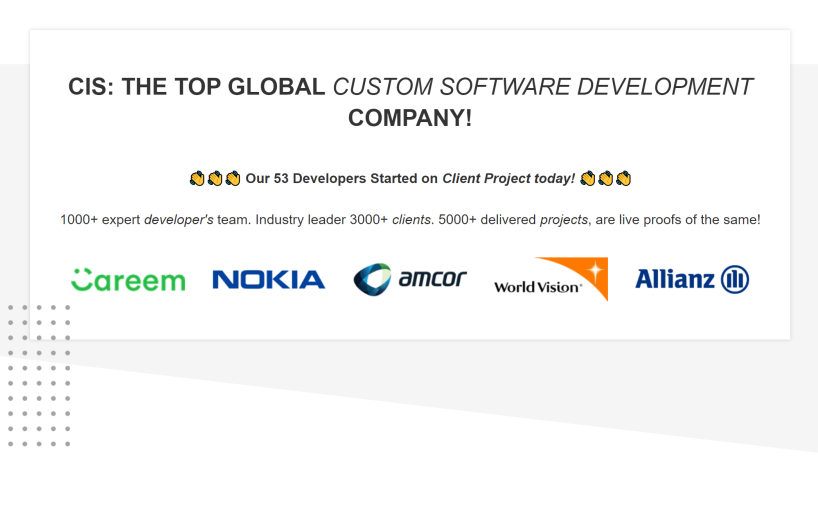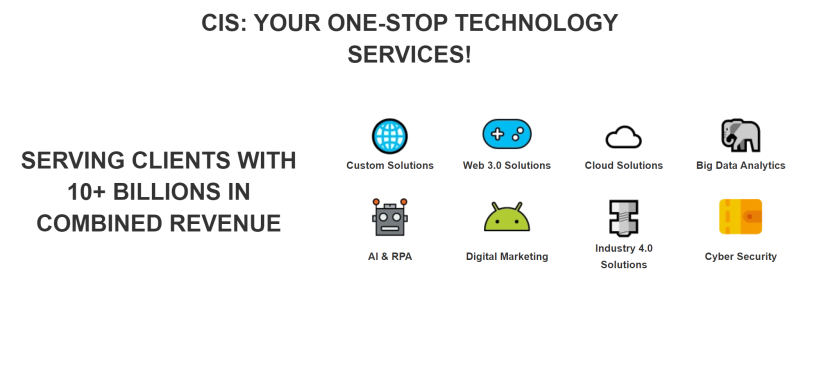Maximizing ROI: The Cost and Benefits of Adopting Sap For Asset Management for Your Business
- SAP for Asset Management - Detailed Analysis by Enterprise Solutions Experts
Request A Free Consultation - Why Use SAP For Asset Management



Why Mid-size Companies and Enterprises needs SAP For Asset Management:
Mid-size companies and enterprises need SAP for Asset Management to help them maximize their asset utilization, improve operational efficiency, reduce costs, and enable better decision making. With SAP for Asset Management, these organizations can easily manage their assets from acquisition to disposal in a single system. This helps them gain real-time visibility into their assets across the enterprise and access accurate data on asset performance to inform decisions about when and how best to use those assets. Additionally, they can leverage predictive analytics capabilities within the system to anticipate future needs or identify potential problems before they occur.
Benefits of using SAP For Asset Management in Mid-size companies and Enterprises:
1. Improved asset visibility:
SAP for Asset Management provides increased visibility into the organization's assets, allowing companies to better manage and optimize their utilization. This helps improve operational efficiency and reduce costs associated with downtime or over-utilization of assets.
2. Enhanced asset tracking:
With SAP for Asset Management, companies can track their assets in real time from procurement through decommissioning. This allows them to monitor the condition of their equipment, identify potential issues quickly, and take preventive action before costly repairs are needed.
3. Streamlined maintenance processes:
SAP for Asset Management simplifies maintenance processes by providing automated workflows that ensure all tasks related to maintaining an asset are completed on time and within budget constraints. It also integrates with other systems such as ERP solutions, giving users a single source of truth when it comes to managing assets across multiple locations or departments.
4 Improved compliance management:
By automating compliance checks and ensuring accurate documentation is maintained throughout the life cycle of an asset, organizations can avoid costly fines due to noncompliance with industry regulations or standards governing asset management activities such as safety inspections or environmental impact assessments .Detailed Features of SAP For Asset Management for Mid-size companies and Enterprises:
1. Automated Asset Tracking:
SAP for Asset Management provides automated asset tracking, allowing users to quickly and easily locate assets across multiple sites or locations. This includes the ability to track where assets are located, when they were last used, and who is responsible for them.
2. Maintenance Scheduling & Monitoring:
With SAP's maintenance scheduling and monitoring capabilities, users can monitor the performance of their equipment and schedule preventive maintenance tasks in order to avoid costly breakdowns. The system also allows users to identify potential problems before they become serious issues that could lead to downtime or expensive repairs.
3. Cost Control & Optimization:
By leveraging data from all sources within an organization, SAP for Asset Management helps organizations optimize costs associated with asset management activities such as procurement, installation, maintenance and disposal of assets over their lifecycle. It also enables companies to make informed decisions about which investments are most beneficial in terms of cost-effectiveness and return on investment (ROI).
4. Real-Time Visibility into Assets:
Through real-time visibility into assets across multiple sites or locations - including current condition information - organizations can ensure that their resources are being utilized efficiently while minimizing risks associated with unexpected downtime due to unplanned outages or damages caused by improper use of equipment/assets.
5 .Integration with Other Systems:
Organizations can integrate SAP for Asset Management with other systems such as ERP solutions like SAP S/4HANA® Cloud Edition so that data related to financial transactions is automatically updated in both systems simultaneously without manual intervention required from end user personnel..Who are the Users of SAP For Asset Management:
SAP for Asset Management is used by organizations across many industries, including manufacturing, retail, banking and finance, healthcare, telecommunications and media, energy and utilities. Customers include ABB Group, Allianz SE & Co. KGaA., AT&T Inc., Bank of America Corporation, BMW AG., Bosch Group, British Telecom plc., Cisco Systems Inc., Coca-Cola Company Ltd., Deutsche Telekom AG among others.
How to ensure Data Security and Compliance with SAP For Asset Management:
1. Implement strong authentication and access control measures:
Use multi-factor authentication (MFA) to ensure that only authorized personnel have access to the system, and restrict user permissions based on job roles.
2. Encrypt sensitive data:
Ensure all sensitive business information is encrypted both in transit and at rest for added security.
3. Perform regular vulnerability scans:
Scan the SAP environment regularly with a reputable third-party vendor or use an automated tool like QualysGuard to detect any potential vulnerabilities that could be exploited by malicious actors.
4. Monitor user activity logs:
Regularly review your system's audit logs for suspicious activities such as unauthorized attempts to gain access or modify data, which can indicate a breach of compliance requirements or malicious intent from external sources.5 . Adopt industry best practices : Follow industry best practices when it comes to asset management processes such as patching, backup & recovery, incident response plans etc., so you can protect your systems against emerging threats and comply with relevant regulations & standards (e..g PCI DSS).
How SAP For Asset Management can increase organization Productivity, Agility, and Profitability:
SAP for Asset Management can increase organization productivity, agility, and profitability by streamlining asset management processes. It enables organizations to manage their assets more effectively, reducing the amount of time spent on manual tasks such as tracking and monitoring assets. By automating these processes with SAP for Asset Management, organizations can save money while increasing efficiency. Additionally, it provides real-time visibility into all aspects of asset management from acquisition to disposal which helps organizations make better decisions faster and improve operational performance. Finally, the improved accuracy of data generated by SAP for Asset Management leads to increased cost savings through reduced waste and improved utilization rates.
How to Measure KPIs and increase Benefits of implementing SAP For Asset Management in Mid-size companies and Enterprises:
1. Establish KPIs:
Start by defining the key performance indicators (KPIs) that will be used to measure the success of implementing SAP for Asset Management in your company. Consider factors such as cost savings, increased efficiency, improved customer service, and more.
2. Monitor Performance:
Track these KPIs over time to gauge how the implementation of SAP for Asset Management is affecting your business operations. Use metrics like asset utilization rate, inventory turnover rate, downtime reduction percentage and others to measure progress against your objectives.
3. Measure Benefits:
Calculate the benefits that have been gained from implementing SAP for Asset Management in terms of cost savings or other improvements in business operations and customer satisfaction levels. This can help you understand where additional investments may be necessary or if there are areas where further optimization is possible.
4. Leverage Technology:
Utilize technology tools like dashboards and analytics to track performance data quickly and accurately so you can make informed decisions about improving processes with SAP for Asset Management solutions going forward. This will also give you a better understanding of what works best within your organization when it comes to managing assets efficiently with this software suite .
5 Improve Efficiency:
Identify opportunities for automation that could improve efficiency across different departments within your organization while reducing costs associated with manual processes related to asset management activities using SAP solutions . Make sure all employees understand their roles in utilizing these technologies correctly so they can get maximum benefit from them on an ongoing basis .How SAP For Asset Management can increase Employee Morale in your organization:
SAP for Asset Management can increase organization employee morale by improving the efficiency and accuracy of asset management tasks. It provides an automated system to track, monitor, and manage assets throughout their entire lifecycle, from purchase to disposal. This helps streamline processes for employees responsible for asset management, freeing up time to focus on other important tasks that may be more engaging or rewarding. Additionally, SAP for Asset Management can provide real-time visibility into the status of all assets in the organization which gives employees a sense of control over their work environment as well as greater job satisfaction knowing they are helping make sure everything is running smoothly.
How SAP For Asset Management is Better than its Competitors:
SAP for Asset Management is a comprehensive, integrated asset management solution that provides industry-leading capabilities for managing physical assets. It helps organizations optimize their asset lifecycle by enabling better decision making and improved operational efficiency. Compared to its competitors, SAP for Asset Management offers several advantages such as:
1. Comprehensive visibility into the complete asset lifecycle - SAP's end-to-end solution enables companies to gain insight into all aspects of their assets from acquisition through retirement.
2. Automated processes - Streamlined workflows and automated processes help improve accuracy and reduce manual effort associated with maintaining asset records throughout the entire life cycle of an asset.
3. Scalable architecture - The system can be easily scaled up or down depending on business needs without significant cost or complexity implications.
4. Flexible deployment options - Organizations can choose between cloud, on premise or hybrid deployments depending on their specific requirements and preferences
Cost to Develop & Implemention of SAP For Asset Management:
The cost to develop and deploy SAP for Asset Management will vary depending on the size of the project, scope of work, and other variables. However, a ballpark estimate for an implementation with basic functionality could range from $50k to $500k or more.
Why outsourcing implementation services for SAP For Asset Management is better for Mid-size companies and Enterprises:
Outsourcing implementation services for SAP for Asset Management can be beneficial to mid-size companies and enterprises in a number of ways. First, outsourcing the implementation process allows organizations to leverage the expertise and experience of an experienced partner who specializes in this area. This ensures that the implementation is done quickly, efficiently, and cost effectively. Furthermore, it eliminates the need for internal resources which can often be costly or difficult to find with specialized knowledge in asset management software solutions. Additionally, outsourcing also helps ensure compliance with industry standards such as Sarbanes-Oxley (SOX) and General Data Protection Regulation (GDPR). Finally, outsourcing provides access to best practices from other customers who have already implemented similar solutions successfully so that organizations can benefit from their experiences when implementing their own solution.


